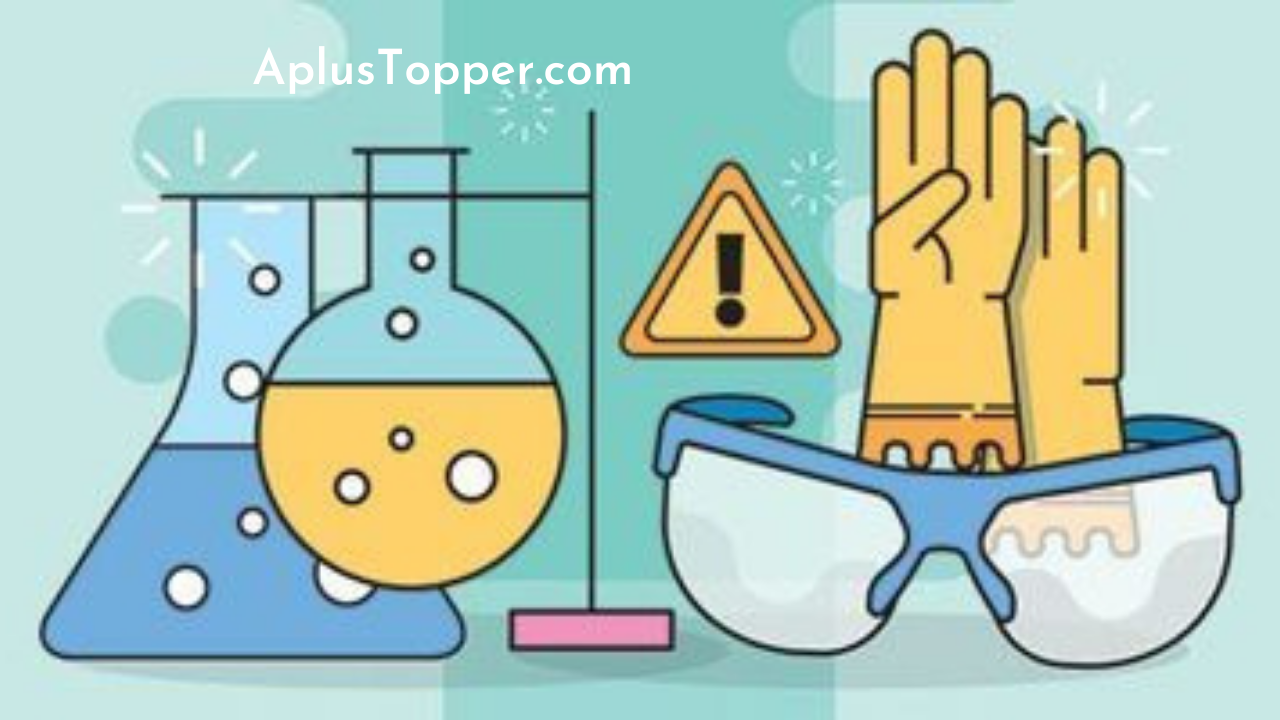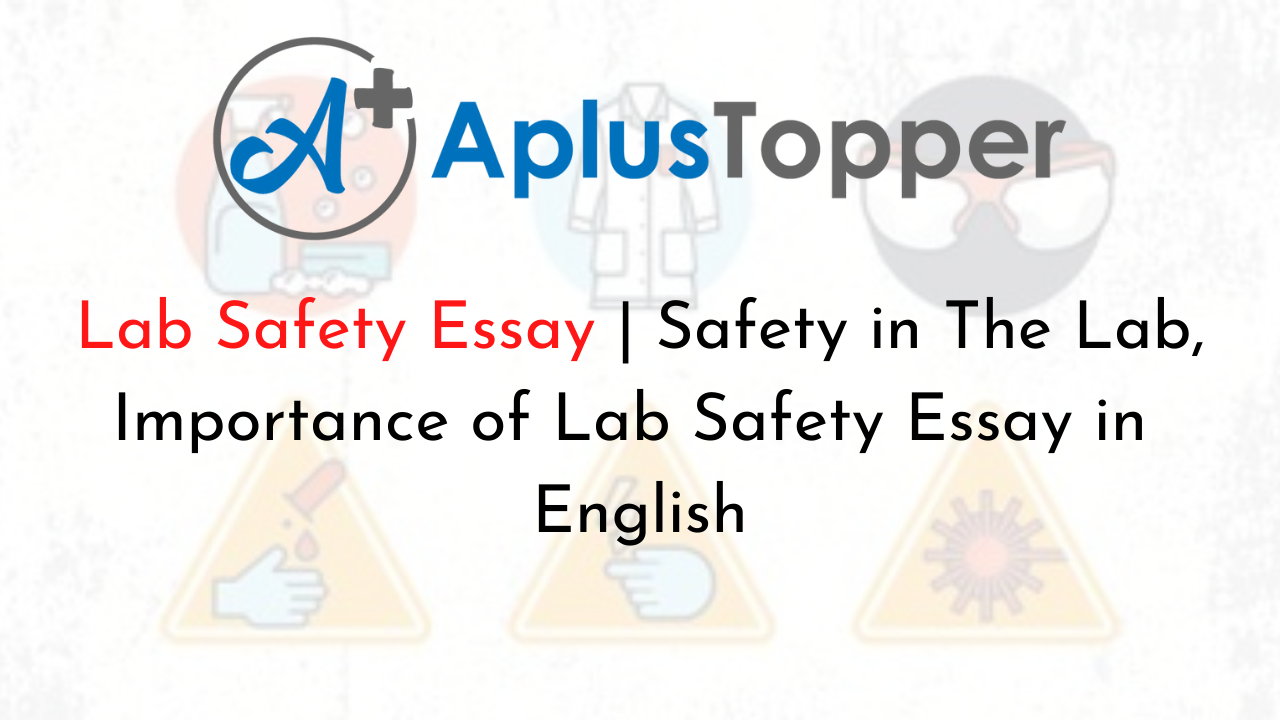Lab Safety Essay: If you’re an aspiring chemist or lab technician, then this essay is for you! There are many dangers that surround the lab, and you must be aware of them if you want to prevent injury or even death. This essay explores the safest and most effective methods of keeping yourself and your coworkers safe while in a lab.
You can also find more Essay Writing articles on events, persons, sports, technology and many more.
Safety In The Lab
Laboratory safety is a broad term that refers to the safe use of a lab and its associated equipment. There are many different aspects to laboratory safety, including chemical hygiene, hazard identification and risk assessment, as well as work-place injury prevention. Laboratory accidents can occur at any time and could result in serious injury or even death. One of the most common accidents in the lab are chemical fires. Chemical fires can occur when flammable materials are exposed to an open flame or spark. They result in burns, blindness, and death if left untreated.
The majority of chemical fires are caused due to careless handling and human errors – such as the storage of combustible materials near the ceiling or in inaccessible areas. If a fire occurs, it can spread rapidly and cause large amounts of damage to the lab and other areas in the building. Some examples of flammable materials include: alcohol, butane, gasoline, gasoline vapors, acetone, benzene, ethyl acetate, acetic acid, hydrogen cyanide, kerosene, lacquer thinner, propane, methane, etc. Following are a few important rules to be followed when working in a lab
- Use gloves when handling chemicals. Whenever you are handling chemicals, it is important to use gloves. Since the skin has the potential to absorb chemicals into the body, gloves should be worn to avoid contact with harmful substances.
- Open chemicals in a well-ventilated area. Prior to beginning an experiment, make sure the laboratory is well-ventilated and all chemicals and equipment are in good working order.
- Use the appropriate sized container for the chemical being handled. Chemical containers are marked with various sizes to show the volume of liquid that the container is capable of holding. These markings are in liters or milliliters and help identify the best container for the chemical being handled.
- Clean up spills immediately, using the appropriate solvent or solids. It’s important to use the appropriate solvent to avoid damage, and to do it as soon as possible.
- Do not eat or drink in the lab. Eating or drinking in the lab is not allowed because it can lead to contamination.
- Before starting any experiment, it is important to have the appropriate safety equipment. The most important safety equipment is a lab coat. Protective goggles are also recommended.
What To Do If You Come Into Contact With Hazardous Substances?
The most important thing you can do is be aware of your surroundings. If you see something, say something immediately to someone else in the lab or a supervisor. If you need to work with hazardous substances, remember to put on protective gear. If you come into contact with a hazardous substance, then follow these steps:
- Evacuate the lab if it is safe to do so. Sometimes, it is necessary to evacuate the lab for safety reasons. If there is a fire, chemical spill or other emergency that requires evacuation, all employees should evacuate the building immediately.
- Get medical attention if needed. Injuries sustained in the lab must be treated. Rinse the wound with saline or clean water and cover it with a sterile dressing if available. If exposed to dangerous substances, it is important to seek medical attention immediately. The risk of infection increases dramatically after the first few hours. If left untreated, an infection can lead to life-threatening problems such as sepsis or gangrene.
- Report the spill to your supervisor. When a spill occurs, it is important to report it to your supervisor. The spill should be cleaned up quickly and everyone in the area must be notified.
- Wash your hands, face, and other parts of the body. Chemical exposure can cause skin irritation, allergic reactions, and other health problems. Washing exposed areas after handling chemicals is the best way to protect yourself and avoid potential hazards.
- Change or dispose of your clothes if exposed to ionizing radiation. The most important thing to do in case of nuclear radiation exposure is to change or dispose of your clothes and shoes. Even if you haven’t been exposed to any radiation, it’s important to take precautions and securely dispose of your clothes as soon as possible.
Prudent Practices in Educational Institutions
Chemical safety is an important issue for labs, and many chemistry labs will have a designated chemical safety officer. When working with chemicals, it’s important to know how to handle them safely and how to store them safely as well. It is also important to understand how to properly dispose of hazardous chemicals, and to know who is responsible for their disposal. The lab management team should make sure that all members are on board with the lab’s policies and procedures. Safety glasses, dust masks, and gloves should be worn when handling potentially dangerous chemicals.
All chemical containers should have labels with the name and appropriate chemical hazards noted. For example, if a lab uses solutions or solutions containing acids, then the labels should have a warning statement of what to do if the solution gets in the eyes, and how to wash off acid spills. Laboratory glassware should be labeled with identification as to what it contains, including name and chemical hazards. Volatile chemicals should not be stored in the same container as other chemicals. If a container is punctured, it should be immediately contained. If a chemical spills, it should be cleaned up immediately by rinsing with appropriate chemicals. Also, never eat, drink or smoke in a lab setting.

Key Takeaways of Lab Safety
Laboratory safety is a significant concern. In order to keep your laboratory as safe as possible, it’s important to follow some general lab safety rules. Every lab should have a fire alarm and evacuation plan. Some labs even have smoke detectors and carbon monoxide detectors. Also, ask your facility manager or staff if they have a safety committee that oversees the safety practices for your lab. The following are rules that relate to almost every laboratory, which is the focus of this essay.
- Pipettes, thermometers and other lab tools should be cleaned after use.
- Glassware and other materials may need to be well rinsed with relevant solutions or other disinfectants before reuse.
- Properly sterilize all equipment to minimize cross contamination. For example, all pipettes should be thoroughly cleaned in an autoclave before use. Disposable glassware should be cleaned with a hot, soapy water solution. The dishwasher is not suitable for glassware, because the heating elements can break bits off the dishes as they are being washed.
- Laboratory waste should be handled and disposed of in a proper manner. It should never be thrown away with the regular weekly garbage. The waste should be carefully removed from the laboratory and deposited in a designated place. Most labs will set aside a small waste container for different types of wastes.
- Be sure to read all safety signs on your lab’s bulletin boards.
- Also, beware of any safety violations your lab may have.
- Safety rules and protocols are designed to keep you safe, hence follow them strictly.
- If chemicals must be disposed of, try to dispose of them correctly. For instance, some chemicals should never be poured down the drain or thrown away in the trash. Chemicals that are dangerous should be taken to the hazardous waste site.
- Proper disposal of chemicals will help prevent accidents and unnecessary exposures to people and the environment.
- Moreover, be aware of how hazardous chemicals can affect your body. For instance, acetone is very flammable. Acetone will burn your eyes and skin if you breathe it in, but once it comes into contact with the air or skin, it will burn. The fumes are also irritating, and chronic exposure can cause respiratory problems. Rubber gloves will protect your skin from chemical burns. Acidic liquids are corrosive and can damage metals, wood, and synthetic materials. Acids can also react with bases to produce dangerous fumes. Some acid spills are not easily cleaned up and tend to leave behind corrosive residue. Acid spills can also cause damage to sensitive electronic or metal equipment. Also, try to use bunds, spill kits, and spill pallets to contain acid spills.
Conclusion on Lab Safety Essay
There are many factors to consider when making laboratory safety plans. The most important factor is having a plan for all of the chemicals in your lab. You should also have a plan for emergency situations that involve spills or fires as well as how you will respond to emergency situations.
FAQ’s on Lab Safety Essay
Question 1.
How do you stay safe in a lab?
Answer:
In a lab, safety is of the utmost importance. There are many types of hazards in a lab, so take the time to learn about the risks and how to protect yourself against them.
Question 2.
What is the first rule of lab safety?
Answer:
The first rule of lab safety is to never work alone. This rule is especially important when working with hazardous substances.
Question 3.
What are some Do and Don’ts in the laboratory?
Answer:
Do:
- Wear safety glasses and protective clothing
- Wipe spills and prevent contamination
- Wash hands before working
Don’t:
- Eat-in the lab
- Touch volatile or dangerous chemicals
- Touch lab equipment without washing hands
